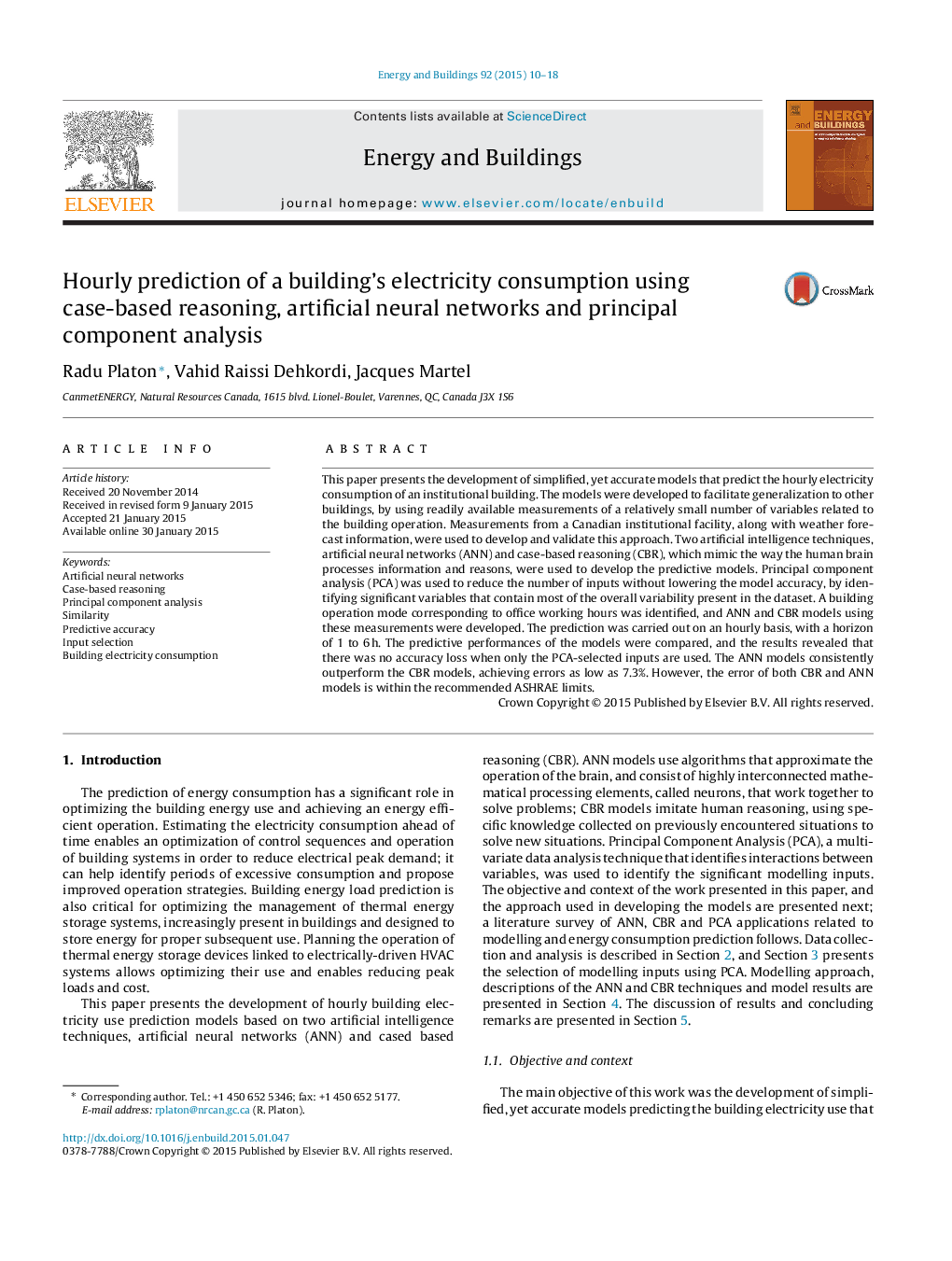| Article ID | Journal | Published Year | Pages | File Type |
|---|---|---|---|---|
| 6732009 | Energy and Buildings | 2015 | 9 Pages |
Abstract
This paper presents the development of simplified, yet accurate models that predict the hourly electricity consumption of an institutional building. The models were developed to facilitate generalization to other buildings, by using readily available measurements of a relatively small number of variables related to the building operation. Measurements from a Canadian institutional facility, along with weather forecast information, were used to develop and validate this approach. Two artificial intelligence techniques, artificial neural networks (ANN) and case-based reasoning (CBR), which mimic the way the human brain processes information and reasons, were used to develop the predictive models. Principal component analysis (PCA) was used to reduce the number of inputs without lowering the model accuracy, by identifying significant variables that contain most of the overall variability present in the dataset. A building operation mode corresponding to office working hours was identified, and ANN and CBR models using these measurements were developed. The prediction was carried out on an hourly basis, with a horizon of 1 to 6Â h. The predictive performances of the models were compared, and the results revealed that there was no accuracy loss when only the PCA-selected inputs are used. The ANN models consistently outperform the CBR models, achieving errors as low as 7.3%. However, the error of both CBR and ANN models is within the recommended ASHRAE limits.
Keywords
Related Topics
Physical Sciences and Engineering
Energy
Renewable Energy, Sustainability and the Environment
Authors
Radu Platon, Vahid Raissi Dehkordi, Jacques Martel,
